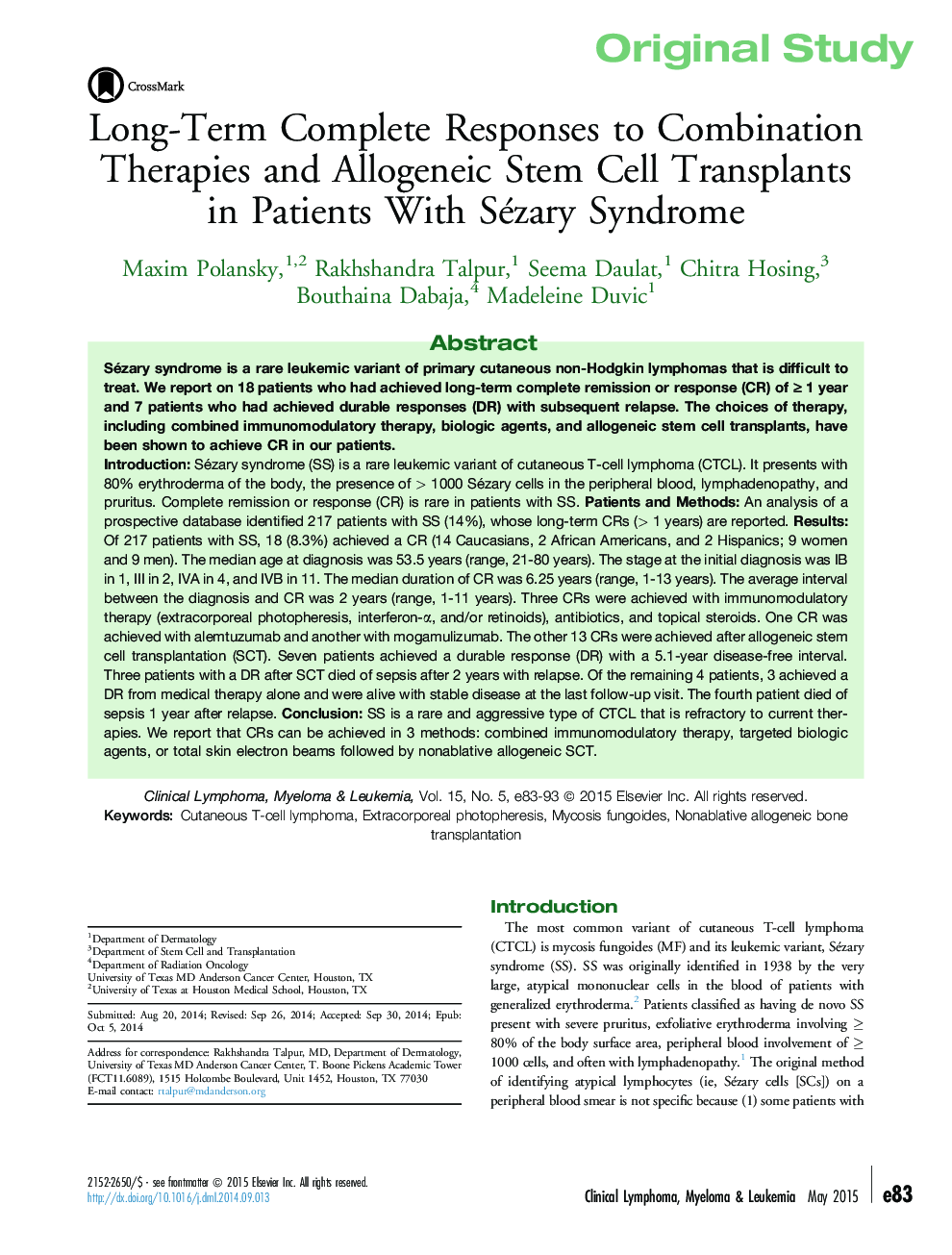| Article ID | Journal | Published Year | Pages | File Type |
|---|---|---|---|---|
| 2754390 | Clinical Lymphoma Myeloma and Leukemia | 2015 | 11 Pages |
IntroductionSézary syndrome (SS) is a rare leukemic variant of cutaneous T-cell lymphoma (CTCL). It presents with 80% erythroderma of the body, the presence of > 1000 Sézary cells in the peripheral blood, lymphadenopathy, and pruritus. Complete remission or response (CR) is rare in patients with SS.Patients and MethodsAn analysis of a prospective database identified 217 patients with SS (14%), whose long-term CRs (> 1 years) are reported.ResultsOf 217 patients with SS, 18 (8.3%) achieved a CR (14 Caucasians, 2 African Americans, and 2 Hispanics; 9 women and 9 men). The median age at diagnosis was 53.5 years (range, 21-80 years). The stage at the initial diagnosis was IB in 1, III in 2, IVA in 4, and IVB in 11. The median duration of CR was 6.25 years (range, 1-13 years). The average interval between the diagnosis and CR was 2 years (range, 1-11 years). Three CRs were achieved with immunomodulatory therapy (extracorporeal photopheresis, interferon-α, and/or retinoids), antibiotics, and topical steroids. One CR was achieved with alemtuzumab and another with mogamulizumab. The other 13 CRs were achieved after allogeneic stem cell transplantation (SCT). Seven patients achieved a durable response (DR) with a 5.1-year disease-free interval. Three patients with a DR after SCT died of sepsis after 2 years with relapse. Of the remaining 4 patients, 3 achieved a DR from medical therapy alone and were alive with stable disease at the last follow-up visit. The fourth patient died of sepsis 1 year after relapse.ConclusionSS is a rare and aggressive type of CTCL that is refractory to current therapies. We report that CRs can be achieved in 3 methods: combined immunomodulatory therapy, targeted biologic agents, or total skin electron beams followed by nonablative allogeneic SCT.
